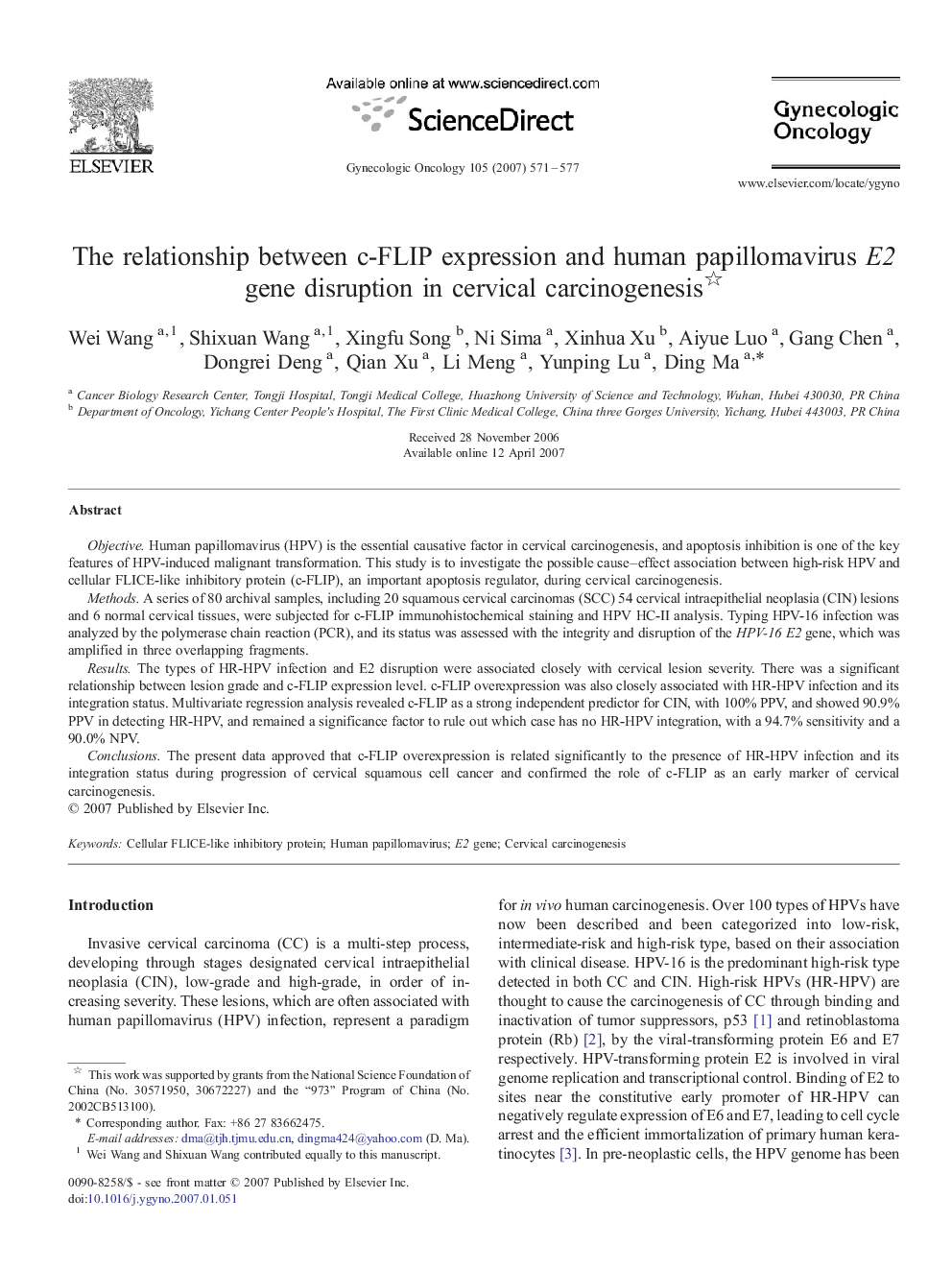| Article ID | Journal | Published Year | Pages | File Type |
|---|---|---|---|---|
| 3947637 | Gynecologic Oncology | 2007 | 7 Pages |
ObjectiveHuman papillomavirus (HPV) is the essential causative factor in cervical carcinogenesis, and apoptosis inhibition is one of the key features of HPV-induced malignant transformation. This study is to investigate the possible cause–effect association between high-risk HPV and cellular FLICE-like inhibitory protein (c-FLIP), an important apoptosis regulator, during cervical carcinogenesis.MethodsA series of 80 archival samples, including 20 squamous cervical carcinomas (SCC) 54 cervical intraepithelial neoplasia (CIN) lesions and 6 normal cervical tissues, were subjected for c-FLIP immunohistochemical staining and HPV HC-II analysis. Typing HPV-16 infection was analyzed by the polymerase chain reaction (PCR), and its status was assessed with the integrity and disruption of the HPV-16 E2 gene, which was amplified in three overlapping fragments.ResultsThe types of HR-HPV infection and E2 disruption were associated closely with cervical lesion severity. There was a significant relationship between lesion grade and c-FLIP expression level. c-FLIP overexpression was also closely associated with HR-HPV infection and its integration status. Multivariate regression analysis revealed c-FLIP as a strong independent predictor for CIN, with 100% PPV, and showed 90.9% PPV in detecting HR-HPV, and remained a significance factor to rule out which case has no HR-HPV integration, with a 94.7% sensitivity and a 90.0% NPV.ConclusionsThe present data approved that c-FLIP overexpression is related significantly to the presence of HR-HPV infection and its integration status during progression of cervical squamous cell cancer and confirmed the role of c-FLIP as an early marker of cervical carcinogenesis.
